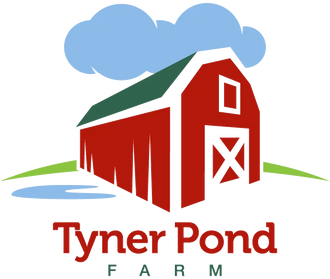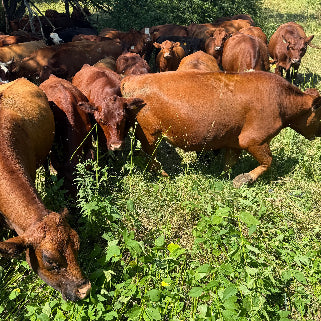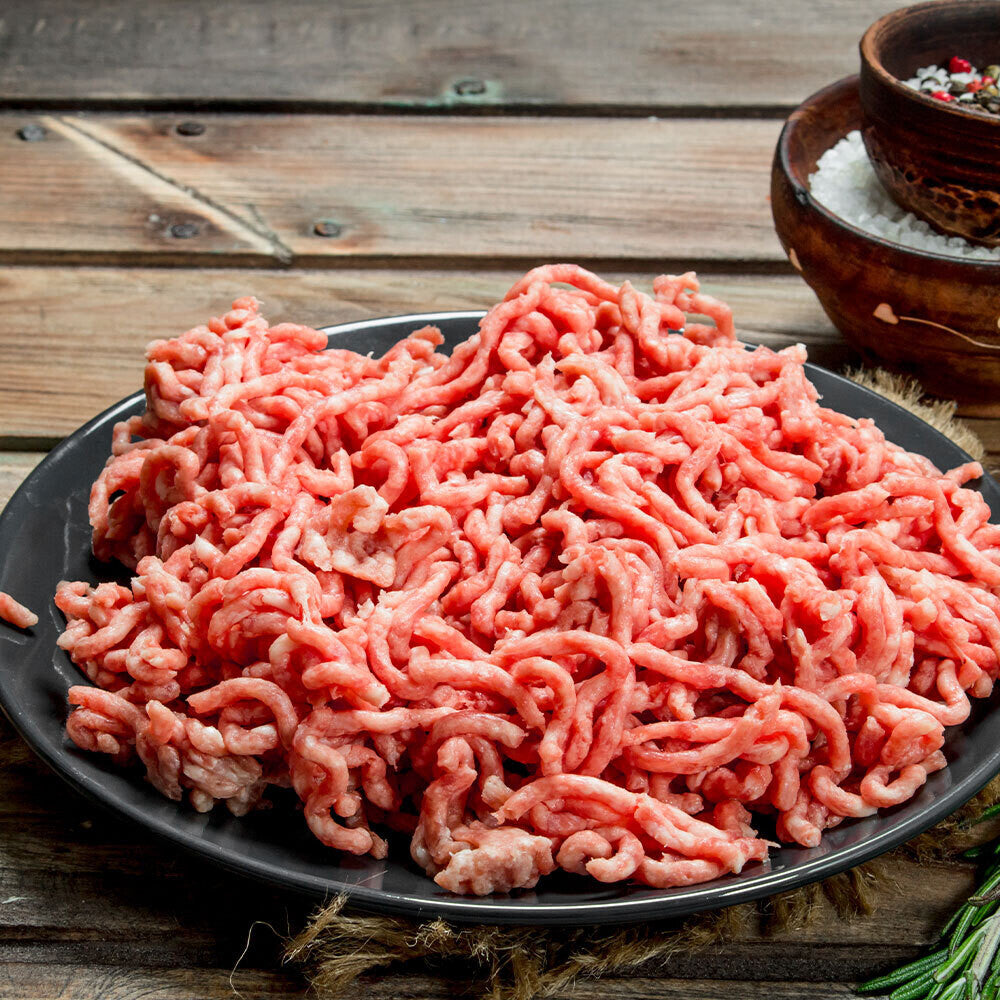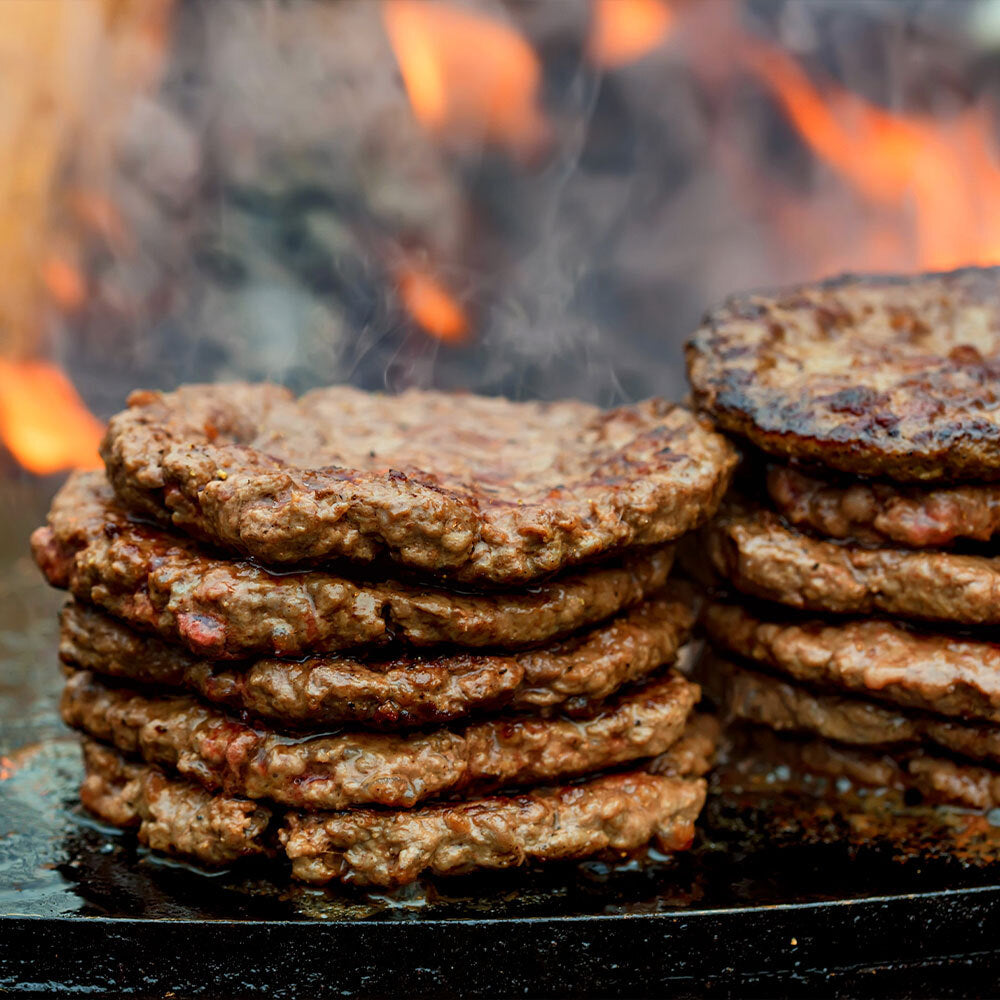
The Forgotten Role of Water in Regenerative Farming
At Tyner Pond Farm, we pay close attention to how rain behaves. When a storm rolls through central Indiana, we notice whether the water disappears into the ground or runs off the surface. Over the years, as our grazing management improved, more of it began to stay put. That’s no accident — it’s what living soil is designed to do.
A recent Acres U.S.A. interview with water ecologist Alpha Lo offered an important reminder that water cycles are not fixed. They respond to land use. Lo studies what’s called the small water cycle, and how farms can influence rainfall patterns simply through how they manage their ground. It’s a concept that deserves more attention in agriculture.
The Small Water Cycle
In a healthy landscape, rain doesn’t just fall and drain away — it circulates. Plants pull water from the soil and release it back to the air through transpiration. That moisture then condenses and falls again, often nearby. This repeating pattern is the small water cycle.
When land is bare or compacted — as is common under industrial tillage or feedlot systems — that cycle breaks. Instead of absorbing rainfall, the ground sheds it. Streams flood, soil erodes, and the local air dries out. Each dry season grows a little longer, and the whole region loses its ability to buffer weather extremes.
The Biotic Pump
Scientists call this deeper process the Biotic Pump — the natural movement of air and moisture driven by vegetation. Forests, grasslands, and healthy pastures all help pull moist air from the oceans and circulate it inland. When vegetation thrives, it draws in humidity and releases it upward, lowering surface pressure and effectively “pumping” rain into the interior.
But when land is cleared, plowed, or chemically sterilized, that pump weakens. Moisture that should have recycled locally is instead lost to dry winds and distant storms. The cure isn’t complex technology. It’s life itself — green plants, living roots, and soil biology doing what they were built to do.
How Regenerative Grazing Fits In
Our daily grazing rotations mimic the movement of wild herds that once helped keep grasslands hydrated and stable. Short, intense grazing followed by long recovery periods maintains constant plant cover. Each hoofprint helps water infiltrate. Each manure pat feeds soil microbes that build structure and organic matter.
Every year we see more infiltration and less runoff. That means less standing water after storms — and more stored moisture when the rain stops. Over time, the land becomes its own reservoir.
A Self-Healing System
Researchers like Charles Eisenstein and Walter Jehne have shown that restoring water’s natural cycles is a foundation for real climate balance. Hydrated land cools itself. When soil holds more water and plants transpire steadily, air temperatures moderate, and the local climate steadies.
That’s what regeneration means to us. It’s not about adopting new slogans or certifications. It’s about working with the natural systems that already exist — and proving that a well-managed pasture can play the same cooling, rain-building role as a forest.
Bringing It Home
Here in Indiana, we see proof every year. Our pastures stay green deep into fall. Creeks run clearer. Cattle graze longer without hay. Each of those outcomes starts with water — not more of it, but better use of what falls.
Farming this way turns every rainfall into an investment. We’re not just growing grass and beef; we’re helping rebuild a living water cycle that sustains the land itself.
Frequently Asked Questions
What do you mean by the “small water cycle”?
The small water cycle describes how moisture circulates locally between land and sky. When soil is healthy and covered with plants, rain soaks in, plants release water vapor through their leaves, and that vapor often becomes new rain in the same region. When the soil is bare or compacted, that cycle breaks — rain runs off instead of soaking in, and droughts become more common.
What is the “biotic pump”?
The biotic pump is a natural process that draws moist air inland. Large areas of living vegetation — forests, prairies, or well-managed pastures — release moisture that cools the air and lowers pressure, pulling in more humid air from elsewhere. This steady movement of moisture helps maintain regional rainfall. When vegetation is lost, the pump weakens, and dry conditions spread.
How does grazing affect the water cycle?
Grazing can either damage or repair the water cycle, depending on how it’s done. Overgrazing and confinement break down soil structure, while planned rotational grazing does the opposite. Moving animals frequently allows grass to recover and roots to grow deep. That builds organic matter, which acts like a sponge — holding rain in the soil instead of losing it as runoff.
















